|
Importing a New Catalogue |
Previous Top Next |
Overview
In addition to the capability to manually add items to the catalogue (see section Adding a New Catalogue Item) it is also possible to import catalogue items from a comma separated value (CSV) file.
NOTE: If your import file contains the same items as the catalogue data you will overwrite the catalogue items.
![]() Click the
Click the ![]() option to start the import process.
option to start the import process.
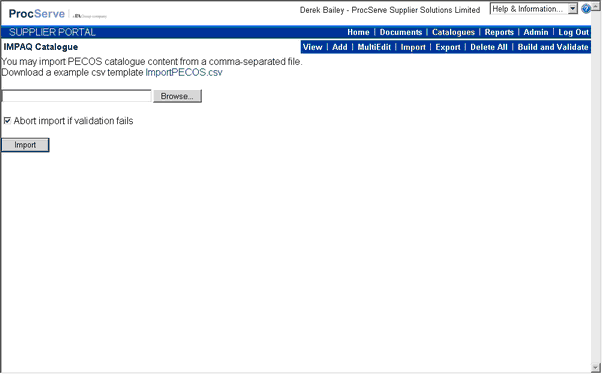
If this is the first time you have run the import function you will need to download a copy of the import template CSV file to ensure that your import file is correctly structured.
![]() Right hand click on the 'filename'.csv link and select the option 'Save Target As...'
Right hand click on the 'filename'.csv link and select the option 'Save Target As...'
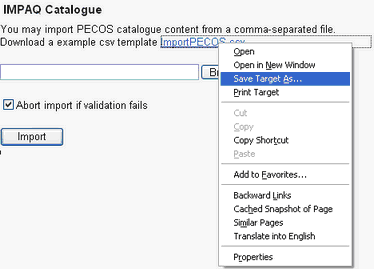
![]() Select the location you wish to save the template file and click Save.
Select the location you wish to save the template file and click Save.
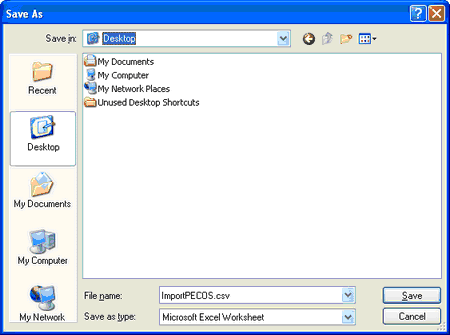
Populate the template file with your catalogue data to create your import file, taking care not to alter the order of the columns within the file.
![]() Click
Click ![]() to locate your newly created import file and click
to locate your newly created import file and click ![]()

The import file will now be shown in the ![]() field.
field.
An option is available to stop and roll back the import process if any data validation errors are identified with the import file e.g. invalid UNSPSC codes, invalid Unit of Measure Codes etc. This option is selected by default but can be removed by clicking on the check box.
![]()
NOTE: It is recommended that the validation option is always left active. If any validation errors occur an email will be sent to the email address used to login into the Supplier Portal, identifying what the validation errors were.
![]() Click
Click ![]() to start the import process.
to start the import process.
A progress animation will appear indicating that the import has started.
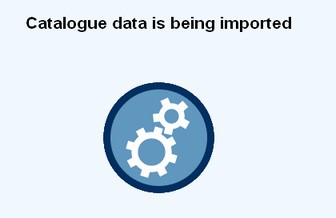
If the number of items being imported is less than 100, the import will complete and the catalogue will become available for editing / building.
If the number of individual items being imported is greater than 100, a message will be displayed indicating that the process is running and that an email will be sent once the import is completed.

Until this email has been received the catalogue will be unusable and the user should log out of the Supplier Portal or perform another action.
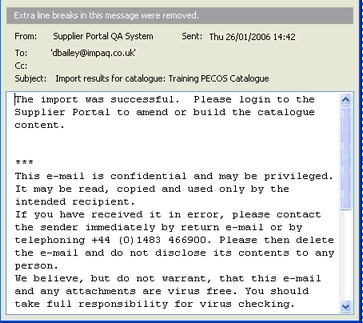
After the e-mail, such as the example above, has been received, the import process has completed and the catalogue is ready for use.
If the import was not successful, an e-mail will be sent stating that the import has failed and a CSV file will be attached containing a list of the errors that occurred.